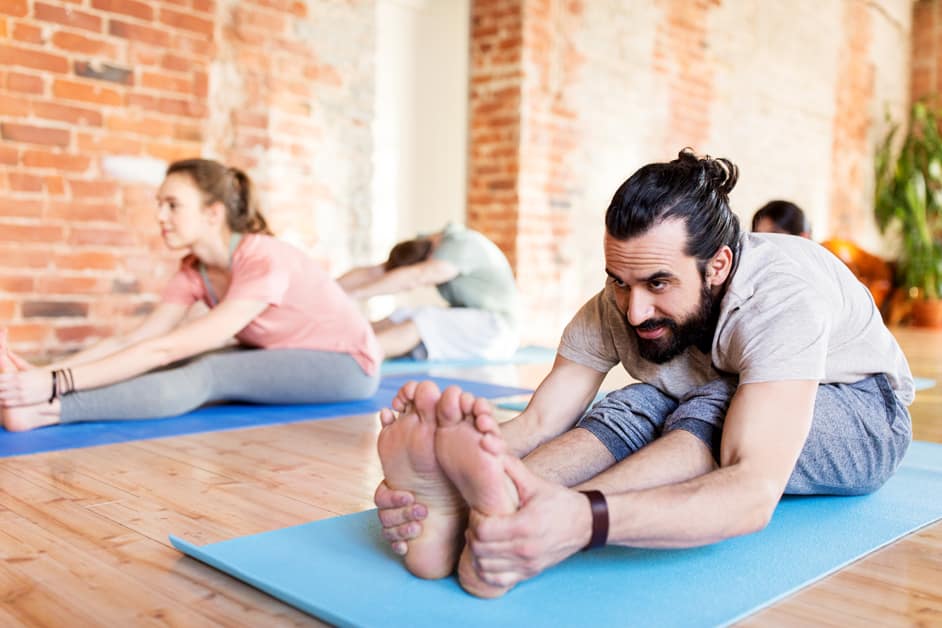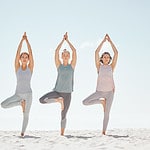Introduction
Pilates is awesome for flexibility and strength – but it’s important to cool down afterwards. Especially if you have knee pain. After each session, target lower body muscles with stretches. This can help reduce stiffness or soreness the next day.
Here’s a guide to stretches that can help relieve all kinds of knee pain, from mild to chronic. If your knee pain is serious or persistent, get a doctor’s advice before trying any type of stretching exercise.
Causes of Knee Pain
Knee pain can have various causes. It may be due to age, overuse or an injury. It can also be caused by a misalignment of the hip or knee joint. This misalignment can lead to an imbalance in muscles around the joint, and this is what causes the pain.
To relieve it, it is important to understand the source of the pain.
Overuse
Overuse is a common cause of knee pain – especially for those involved in sports with running, jumping and other such activities. It can lead to conditions like patellofemoral syndrome, iliotibial band syndrome, chondromalacia patellae and bursitis. Symptoms include:
- Pain around the knee cap during motion.
- Aching behind the kneed cap while standing still.
- Swelling in the knee area.
To prevent knee pain from overuse:
- Take breaks when doing activities that put strain on your knees.
- Warm up with light stretching before running or jumping.
- Cool down with gentle stretches on your hips and hamstrings after.
- See an orthopaedic consultant if the issue persists.
Weak Muscles
Weak muscles can cause knee pain in Pilates fanatics. The thigh, buttock, calf and hamstrings need to be stretched and warmed up properly to avoid injury. If a muscle can’t resist sudden movements or exercises, it can become strained and tight.
Strengthening the quadriceps, glutes, hamstrings and calves with slow resistance exercises is key. This strengthens them over time and helps prevent knee issues.
To prevent knee pain, 10 minutes of dynamic stretching is needed before any physical activity. To cool down after Pilates, static stretches should be held for up to 40 seconds for each part of the body. A post-Pilates-exercise routine has been proven to reduce knee pain.
Poor Posture
Poor posture is a big reason Pilates practitioners suffer knee pain. When the body is misaligned, like with hips, ribs, and shoulders, it puts too much stress on the knee joints and causes pain. This weakens the body and causes overuse injuries, short hip flexors, and weak postural muscles. This makes it hard to stand up straight.
Pilates exercises involve a lot of knee movements making it even more important to have good posture. To reduce injury and pain:
- Balance your weight evenly on both feet by lifting your heels.
- Tighten your abs during each movement.
- Make sure your sit bones are firmly rooted in the mat.
- Check your spine’s natural curves throughout each exercise.
- Keep your legs hip width apart when sitting or doing any leg series exercises.
- Check that your shoulder blades are pushing downwards before any chest movement.
Stretch regularly after Pilates to help prevent stiffness or tightness from bad posture. This will build strength around the knees and help with mobility. It will also reduce the risk of injury or long term issues related to bad posture, like Patellofemoral Syndrome (PFS).
Cooling Down Stretches
Cooling down stretches are key for Pilates aficionados who have knee problems. They’re helpful for easing tension and soreness in joints and muscles after a tough workout. Also, they might help with healing an injured knee.
Let’s check out some of the best cooling down stretches for Pilates practitioners with knee pain:
Standing Hamstring Stretch
The standing hamstring stretch is great for improving flexibility, balance, and range of motion in the hamstrings. It’s also beneficial if you have knee pain or need to cool down after a Pilates session.
To do it, stand with feet hip-width apart and toes slightly outward. Bend from the waist as far as you can. Keep your spine long, and extend your chest. Reach for the floor or a higher point. To help, hold onto something close like a chair, table, or wall.
Put equal pressure on both legs when transitioning from standing to bending. Keep your knees slightly bent, not extending beyond the toes. Hold the posture and take deep breaths. Gently release and come back up slowly, maintaining a straight posture. Do this exercise 3 times. Then move on to other stretches that target other areas of your body.
Standing Quad Stretch
The standing quad stretch is a great stretch for your upper leg muscles. It can help reduce tension and pain in the legs, hips, and knees. Here’s how to do it:
- Stand with feet hip-width apart, back straight.
- Bend right knee behind you. Heel comes up behind glutes, toes lift off ground.
- Get hold of ankle with one hand. Gently pull back towards glutes until you feel a comfortable flare in the front of thigh.
- Hold for 15-30 seconds, then switch sides.
- Do 3 sets to complete this exercise.
Standing Calf Stretch
Stand behind a wall or chair to do the Standing Calf Stretch. Put your right foot flat on the floor. Move your left leg behind you. Plant the heel of your left foot on the ground. Point your toes toward the wall. Lean into the wall with your hands. Feel a stretch in your right calf muscle. Hold this for fifteen to thirty seconds. Switch feet and repeat the stretch on both sides.
Wall Squat
Wall Squat is a cool stretch for Pilates practitioners with knee pains. It lets them move their body and get deep tissue support around the knees.
To do this, lean against a wall and start to move into a squat position. Place feet hip-distance apart, and keep knees above toes. Keep back straight as you go down. Lower depth until it feels comfy.
Once at the bottom, hold for 10 secs or longer if okay. Use pillows or soft items for extra knee support. After 10 secs (or longer), slide away from the wall onto all fours at a goblet pace. Don’t push too hard, but challenge muscles in a safe range.
Do this 3 times. Then, stand carefully and return to upright position. Listen to how your body feels after each practice before doing more demanding activities like Pilates or weight lifting.
Benefits of Cooling Down
Cooling down is an essential part of any Pilates practice. It helps to reduce muscle soreness and injury, and can even reduce knee pain. It increases flexibility and balance, as well as the mental/physical connection. Plus, it can help with circulation and stress relief.
These soothing stretches at the end of a workout can be impactful yet gentle and add value to your practice. For Pilates practitioners with knee pain, cooling down can provide improved joint mobility, tension release in surrounding muscles and joints, and the ability to reintegrate into everyday life feeling successful and relaxed. Taking a few extra minutes at the end of your practice can have lasting positive effects on both your body and your mind.
Conclusion
After an intense Pilates session, stand up and cool down slowly. This will help keep flexibility and reduce potential knee pain. Stretching before and after is vital. Keeping your knees healthy is essential.
Therefore, cool-down stretches are a must to improve knee pain. Find comfortable positions and let the legs relax.
Pilates practitioners with knee problems should also strengthen the muscles around the joint. Repetitions of hip and knee lifts can help. Initiate movements from these positions with intention and focus. Strengthening deep abdominal muscles also helps protect against knee pain by keeping the hips and spine aligned.
Frequently Asked Questions
Q. What are the best cooling down stretches for Pilates practitioners with knee pain?
A. To help cool down after a Pilates practice, the best stretches for practitioners with knee pain are the supine hamstring stretch, the supine hip flexor stretch, and the supine adductor stretch.
Q. How do I do a supine hamstring stretch?
A. To do a supine hamstring stretch, lie on your back on a mat with your legs straight and your feet together. Bend one knee up to your chest and hold it there with your hands. Keeping your other leg straight and your toes pointed, lift the leg up as high as you can. Hold for 10 seconds and then relax.
Q. How often should I do cooling down stretches for Pilates practitioners with knee pain?
A. It is recommended that Pilates practitioners with knee pain do cooling down stretches after each practice session. Doing the stretches after each practice will help reduce the risk of injury and improve flexibility.





